Plants For Tea Gardens: How To Brew The Best Plants For Tea
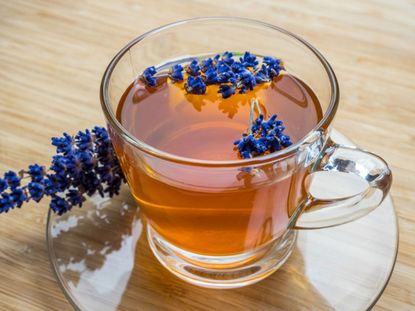
There are many uses for herbs growing in the garden besides providing a haven for butterflies, birds, and bees and impressing the family with your seasoning prowess. Plants for tea gardens are another way to employ your herbs. Very possibly, you already have a number of herbs suitable for the making of tea. Let's take a look at some of the best herbs for tea.
What Plants are Good for Making Tea?
Although it is by no means comprehensive, the following is a list of plants that are good for making tea and which part of the plant to utilize:
- Mint -- Leaves, digestive and calming
- Passionflower -- Leaves, relaxing and soporific
- Rose Hips -- Buds once the bloom has expired, boost of Vitamin C
- Lemon Balm -- Leaves, calming
- Chamomile -- Buds, relaxing and good for a sour tummy
- Echinacea -- Buds, immunity
- Milk Thistle -- Buds, detoxification
- Angelica -- Root, digestive
- Catnip -- Leaves, calming
- Raspberry -- Leaves, female reproduction
- Lavender -- Buds, calming
- Nettles -- Leaves, detoxification
- Red Clover -- Buds, detoxification and purify
- Dandelion -- Root, blood tonic
- Linden -- Flowers, digestive and calming
- Lemongrass -- Stalk, digestive and calming
In addition to these herbs, some other useful herbal tea plants include:
How to Prepare Herbal Tea
In learning how to prepare herbal tea, first, choose a dry morning to harvest your herbal tea plants. The essential oils of the tea herb are highest in concentration before the heat of the day draws them out of the plant. Some herbs may be brewed directly following harvest, and some you may wish to dry. To dry herbal tea plants, there are a couple of different methods, but the primary concern is to use even, gentle heat. A single layer of sprigs can be placed on a tray of a food dehydrator or a microwave lined with paper towels can be used. For the microwave, set a timer for a minute or less and watch closely to avoid burning. Continue to microwave in short bursts, leaving the door open between to let moisture escape, until dry. A low oven of from 100-125 degrees F. (3 to -52 C.) can also be used and, again, leave the door ajar and check frequently. You can also air-dry herbs for tea, taking care to protect from dust by placing in paper bags pierced with holes prior to hanging. Avoid drying herbs in a basement or other musty area as they may absorb odors or get moldy. Once your herbal tea plants are prepared as above, make sure to label them. Whether you store in airtight containers or zip seal bags, dried herbs often look alike and need to have the variety and date printed on them as well as kept separate from others. Store dried herbs in a cool, dry place. Conversely, you may also choose to freeze herbs for tea in zip seal baggies or in ice cube trays covered in water. Herbal ice cubes can then be popped out and put into freezer bags for storage and are great to flavor iced tea or punch.
How to Brew the Best Plants for Tea
When using fresh herbs for tea, use one sprig (or tablespoon (15 mL.)) per person, and bruise by tearing or crushing to release the oils. Herbal teas readiness is led by taste rather than sight as they tend to have little color and take longer to brew than a traditional tea. Tea may brewed by either infusion or decoction. Infusion is a gentler process of releasing oils and works well with either fresh or dried herbs. Bring cold water to boiling in an enameled pot (metal may make the tea taste metallic) and add the tea. If using dried herbs for tea, use 1 teaspoon (5 mL.) per person and one “extra” for the pot. An infuser, mesh ball, muslin bag, or the like may be used to contain the herbs. Steep for five to 15 minutes, strain, fill a cup halfway with infusion, and top with boiling water. When using seed, roots, or hips, decoction is the method to use. First, crush the ingredients to release the essential oils. Use 1 tablespoon (15 mL.) for every 2 cups (480 mL.) of water. Bring water to a boil, add ingredients, and simmer for five to 10 minutes. Strain before drinking. There are endless combinations for herbal teas, so experiment and enjoy the aroma and emotional and health benefits of a homegrown herbal tea garden.
Gardening tips, videos, info and more delivered right to your inbox!
Sign up for the Gardening Know How newsletter today and receive a free download of our DIY eBook "Bring Your Garden Indoors: 13 DIY Projects For Fall And Winter".

Amy Grant has been gardening for 30 years and writing for 15. A professional chef and caterer, Amy's area of expertise is culinary gardening.
-
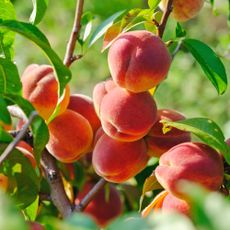 8 Best Fruit Trees To Plant As Bare Roots In Fall – For The Fastest, Sweetest Harvest
8 Best Fruit Trees To Plant As Bare Roots In Fall – For The Fastest, Sweetest HarvestGet a head start on home harvests by planting bare-root fruit trees this fall. Find the best varieties and learn tips for planting and caring for new trees.
By Mary Ellen Ellis
-
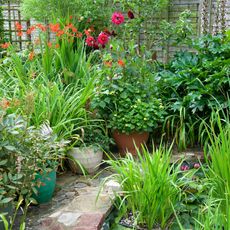 5 Urban Garden Ideas For Any Home – Add Natural Flair To The Tiniest Living Spaces
5 Urban Garden Ideas For Any Home – Add Natural Flair To The Tiniest Living SpacesJust because you live in a city, town or built-up area doesn’t mean you have to do without! Try these urban garden ideas to make a green haven even in limited space
By Mary Ellen Ellis
-
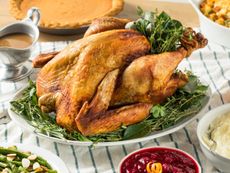 Grow Tasty Herbs For Roast Turkey In Your Garden
Grow Tasty Herbs For Roast Turkey In Your GardenCan you season your turkey with herbs you grow in your own garden? Yes! Click to learn more.
By Amy Grant
-
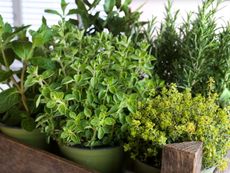 10 Easy Herbs For Beginners
10 Easy Herbs For BeginnersIf you’re new to herb growing, there are some perfect beginner herbs that are low maintenance and easy. Here are our top ten.
By Mary Ellen Ellis
-
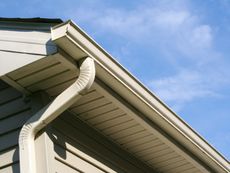 How To Make A Rain Gutter Herb Garden
How To Make A Rain Gutter Herb GardenOne really fun look outside the box is a hanging rain gutter herb garden. A gutter planter is a unique way to house and showcase plants.
By Bonnie L. Grant
-
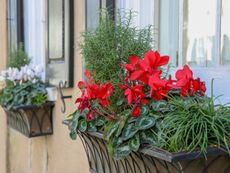 Grow A Beautiful, Edible Herb Window Box
Grow A Beautiful, Edible Herb Window BoxGrowing herbs in window boxes is a space-saving method for producing culinary ingredients for kitchen use. Click for more.
By Laura Miller
-
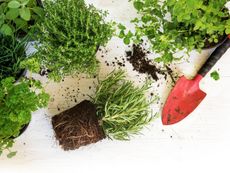 Best Herbs To Direct Sow Vs. Start Indoors
Best Herbs To Direct Sow Vs. Start IndoorsKnowing when to buy herb plants or start them from seeds or cuttings is essential to your success. Read on to learn more.
By Laura Miller
-
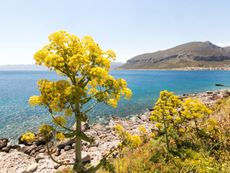 Learn About The Highly Prized Silphium Herb
Learn About The Highly Prized Silphium HerbWhat if there was a perfect plant? In ancient times such a treasure existed. It was the silphium plant.
By Laura Miller
-
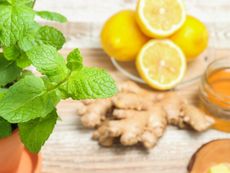 Grow Healing Herbs Indoors: Combat Winter Illness With A Medicinal Garden
Grow Healing Herbs Indoors: Combat Winter Illness With A Medicinal GardenIf you are growing medicinal plants at home, did you know you also can grow an indoor medicinal herb garden? Read on for more.
By Susan Albert
-
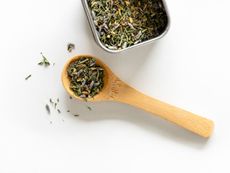 Grow Your Own Herbes De Provence - How To Grow, Dry, And Store Herbs
Grow Your Own Herbes De Provence - How To Grow, Dry, And Store HerbsHomemade gifts can add that special touch to any occasion, such as a jar of herbes de provence. Click here to learn how to grow and make your own for gifting.
By Laura Miller